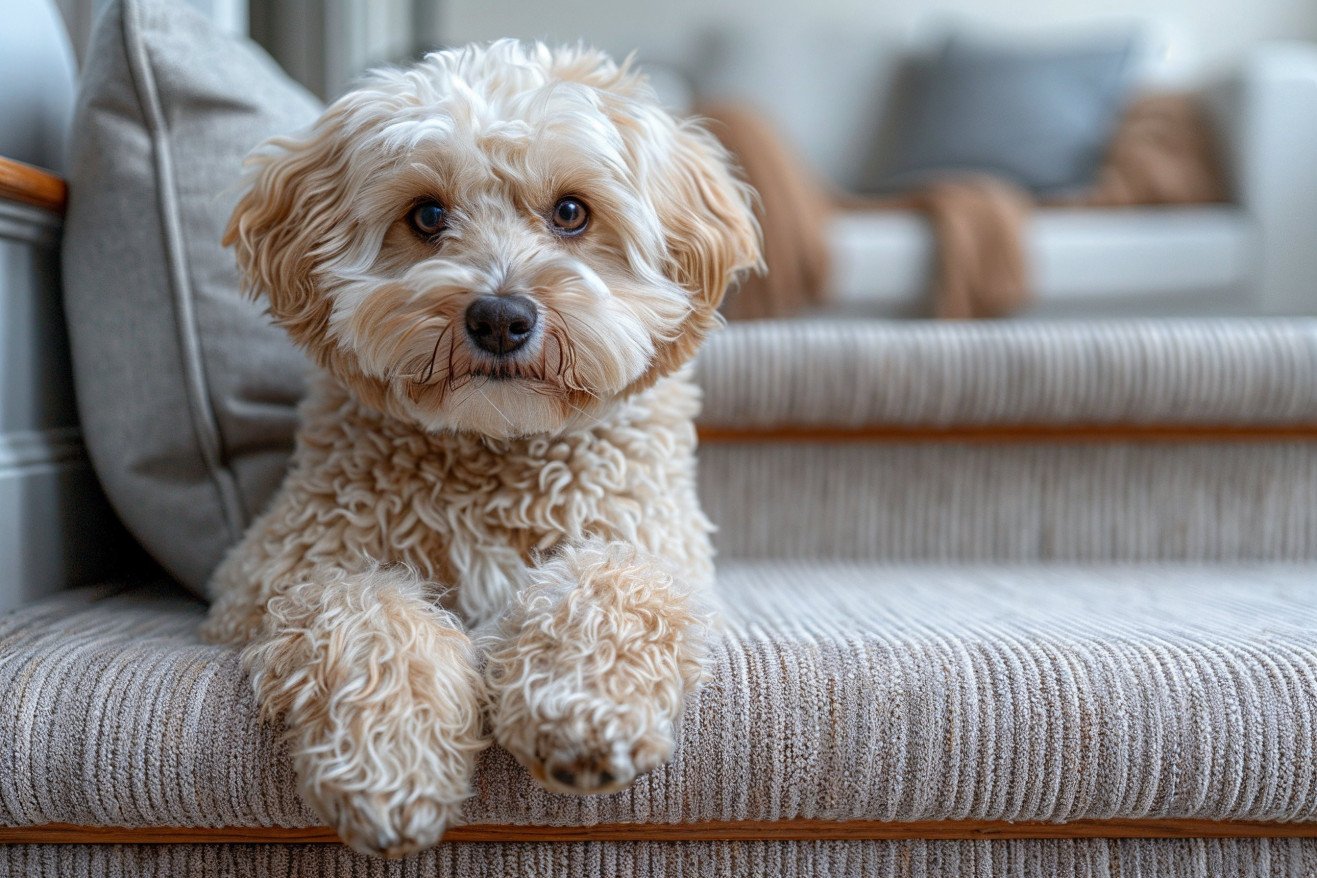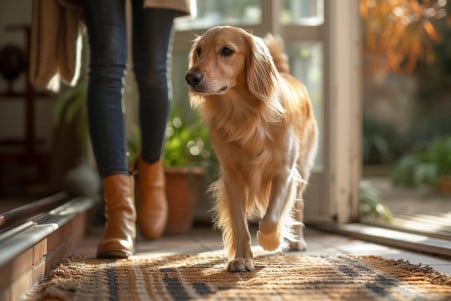Why Does My Dog Sit Alone in Another Room? Exploring the Causes
28 May 2024 • Updated 27 May 2024

If you’ve ever noticed your dog wandering off to sit by themselves, you may have wondered why they need alone time. Dogs may want to be alone for a number of reasons, including wanting to get away from overstimulation, feeling stressed or anxious, marking their territory, or simply wanting some peace and quiet. Knowing why your dog wants to be alone can help you better connect with your four-legged friend.
In this article, we’ll explore research from animal behaviorists, veterinarians, and dog psychologists to help you better understand why your dog exhibits this behavior. By looking at studies about dog behavior, cognition, and socialization, you’ll learn more about why your dog does what they do. This knowledge will not only help you better understand your pet but also help you make sure your dog’s needs are being met, which will help you build a stronger bond with your beloved animal.
Why does my dog sit alone in another room?
Separation Anxiety: When Alone Time Is a Problem
Separation anxiety is a stress response exhibited by dogs when left alone, ranging from mild distress to extreme anxiety. According to The Humane Society, tiring out your dog physically and mentally before leaving is key, through activities like long walks, puzzle toys and long-lasting treats.
Potential causes include changes in the family, lifestyle or routine, as well as traumatic experiences or lack of early socialization. As the ASPCA notes, dogs adopted from shelters are more prone to separation anxiety, likely due to the loss of their previous owners or environment.
Signs may include pacing, vocalization, destruction, indoor accidents, drooling, and attempting to escape, often triggered by cues like you getting ready to leave. WebMD advises making departures low-key to avoid reinforcing the anxiety.
To manage it, use gradual desensitization by slowly getting the dog accustomed to being alone, starting with very short absences paired with positive reinforcement like stuffed toys. Provide plenty of physical and mental stimulation through exercise and food puzzles. Create a comfortable, secure space with bedding that smells like you.
In severe cases where the dog risks injuring themselves, your vet may recommend anti-anxiety medication as an adjunct to the desensitization training, to reduce overall anxiety levels and enable more effective behavior modification, according to The Humane Society. With time and patience, you can help your furry friend overcome this distressing condition and be calm when left alone, setting the stage for creating an enriching environment tailored to their needs.
Set Up a Safe Space
Do you have a safe space or sanctuary area set up for your dog? According to Preventive Vet, having a safe, secure place to go can be especially helpful for dogs that isolate themselves. The area should be climate-controlled, quiet, and include familiar bedding, toys, and water.
Enrichment activities like puzzle toys, scavenger hunts, and scent work can help stave off boredom and provide mental stimulation, as noted by Preventive Vet. You can also help your dog feel more comfortable in the space by using it for meals and quiet time, according to Whole Dog Journal.
You can also help your dog feel more comfortable in the space by introducing it slowly and using treats to reward them for being in the space. Pet Harmony suggests that you also make sure to include foraging opportunities and activities that encourage your dog to move away from you, which can help them learn to be more independent and self-regulate.
By setting up a safe space that's comfortable and includes enrichment activities, you can help your dog feel more comfortable when they're alone, which can make it easier for them to transition when you come back home.
Helping Your Dog Adjust: How to Help Your Dog Reintegrate
Dogs can feel separation anxiety and stress when their owners come back after a period of being alone. According to The Gentle Vets, gradual exposure and desensitization can help your dog adjust to the change and reintegrate. Muenster Pet recommends keeping a consistent schedule and keeping hellos and goodbyes as low-key as possible to reduce stress.
Mental and physical stimulation, including exercise and interactive toys, can help your dog get to a place where they're more relaxed and calm, according to Brookfalls Veterinary. If your dog continues to show signs of distress, it may be time to consult a vet or a certified animal behaviorist for help, says The Gentle Vets.
If you make sure your dog's needs are met during the adjustment period and provide a safe space for them, you can help them feel more secure and work toward helping them become more independent with time and training.
Fostering Independence: Progressive Alone Time Training
Dogs are pack animals and, as a result, they can sometimes have a hard time being alone for long periods of time. The American Kennel Club explains that dogs can feel like something important is missing from their pack when their people are gone, which can lead to destructive behavior and anxiety.
Progressively increasing the amount of time a dog is left alone through structured training can help a dog feel more confident and independent. Preventive Vet suggests using crate training or setting up a long-term confinement area to create a safe space for a dog to be alone. To make alone time more fun for the dog, you can also introduce positive things like food puzzles and calming aids.
Making sure that a dog gets enough physical and mental stimulation before they’re left alone can also help them feel more relaxed and prevent destructive behavior, according to the Blue Cross. By being patient and taking a progressive approach, you can help your dog feel more confident and independent when they’re alone.
Conclusion: How to Build a Better Relationship With Your Dog
It’s important to understand why your dog is spending time alone so that you can meet their needs and help them feel better. By creating an environment that is safe, comfortable, and stimulating and working with your dog to help them overcome their fears, you can help your dog feel better and more secure. In some cases, you may need to seek help from a professional, such as a vet or a dog behaviorist, to help your dog overcome their anxiety.
By understanding your dog's need for alone time and helping them feel better about being alone, you can help them feel more comfortable and secure in your presence. This will help you build a better relationship with your dog and ensure that they are happy and healthy. It’s important to remember that every dog is different, so be patient and consistent as you work with your dog to help them feel better about spending time alone.


